Top 10 Tips for Trekking to Annapurna Base Camp: Trekking Advice
Going on a trek to the Annapurna Base Camp is quite exciting, although many challenges may be encountered along the way. Therefore, planning and preparation are essential.
These guidelines offer invaluable tips for trekking to Annapurna Base Camp safely and enjoyably through the stunning Himalayan trails, whether you are an experienced trekker or a beginner. They will increase your confidence and knowledge about this excellent walk as you embark on it. Be prepared for a grand adventure!
Introduction to Annapurna Base Camp Trek (ABC)
Are you ready to tie your mountain shoes and head off? This is your time to head to Annapurna Base Camp, or as the cool kids call it, ABC!
Think of it this way: There are high mountains with snow covering their peaks, the pleasant smell of rhododendron flowers all over, and the entire community is warmed by welcoming smiles. The magnificent Annapurna massif, which includes some of Earth’s tallest peaks, highlights nature’s theater, which is the Annapurna region. This isn’t just about picturesque scenes but instead, a cultural experience complemented by local dishes that have left many tourists with unforgettable memories.
Why is it a popular trekking destination?
Why on earth does everyone talk rapturously about the Annapurna Base Camp trek? Let us see that in detail! The first to come is panoramic views—just imagine being at the foot of the imposing Annapurna massif, topped by snowy peaks that seem to touch the sky. Are you serious? You can expect your Instagram feed to explode in a few minutes!
Wait a minute—there’s more! The ABC trekking route offers much more than stunning landscapes but also cultural immersion. While walking along pretty villages, you will meet hospitable people who can be compared to cozy tea houses where you can always rest. Be prepared for amazing stories, trying out tasty local dishes, and maybe even some dancing.
What’s even better than this? Everyone can participate in this hike, regardless of their experience! Trails suited for both experts and amateurs can be found everywhere.
Learn about Famous Festivals in Nepal
Tips for Trekking to Annapurna Base Camp
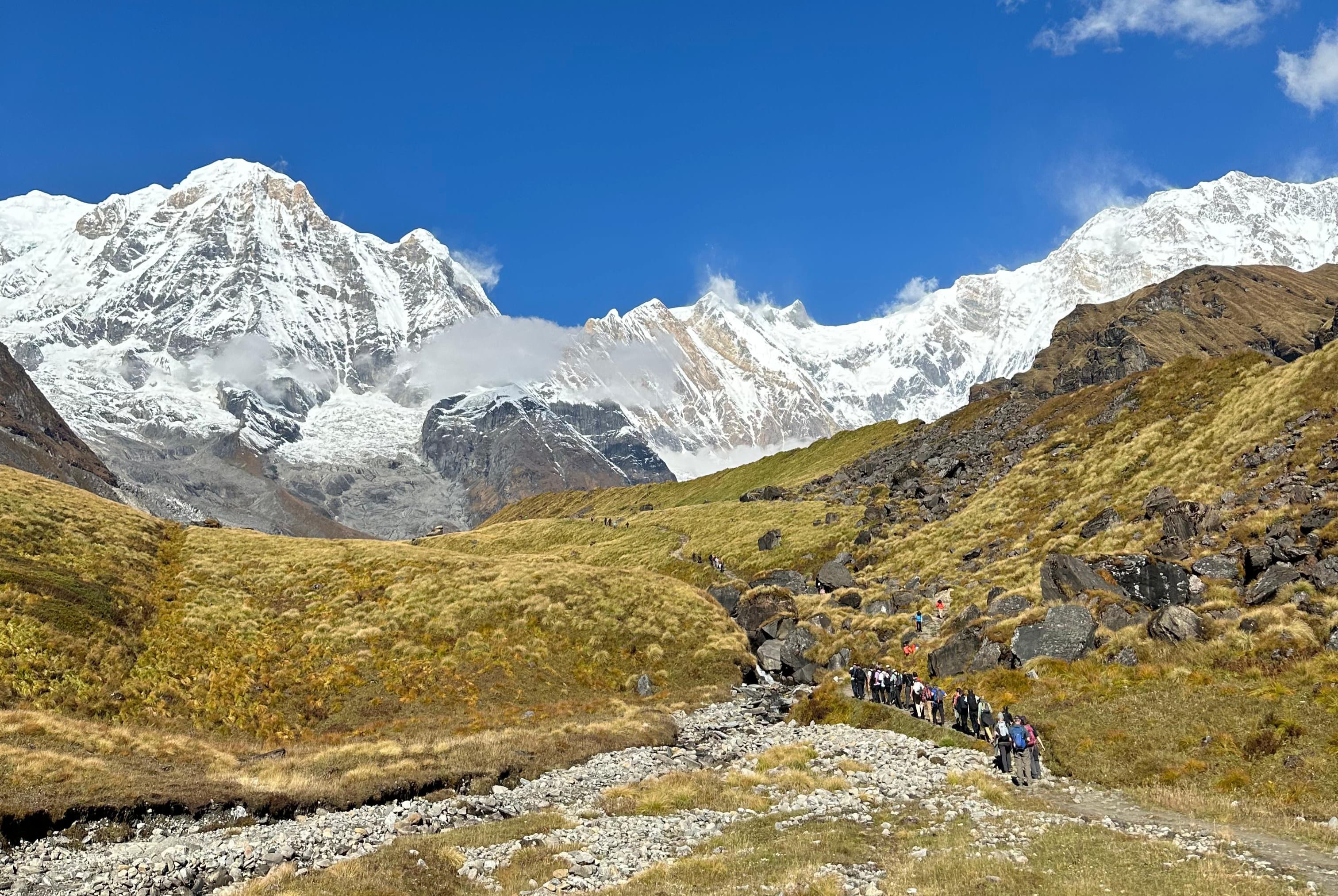
Are you up for a long and challenging journey to Annapurna Base Camp? A lot needs to be done before you embark on this particular track. Whether you are already acquainted with trekking tracks or are trying them for the first time, these hints will help you become an expert in traveling across the way to Annapurna Base Camp.
From carrying the correct equipment to dealing with mountain sickness, these suggestions ensure that you remain safe, cozy, and prepared for the big climb. Then, let us explore the important guidelines required to overcome the ABC trek and relish the marvelous Himalayan landscapes ahead!
1. Plan Your Itinerary in Advance
Understanding where you are going, how far you need to walk on a given day, and the rest helps you stay focused without going the wrong way.
The journey typically lasts between 7 and 12 days, although this depends on one's ability to walk. This means one must plan well to ensure there is enough time for both fun and breaks!
2. Prepare physically for the trek
Even though the ABC trek might be a little complicated for the majority of trekkers, it still requires a lot of physical energy. Begin training a few weeks before you start by increasing your cardiovascular capacity or taking long walks. If possible, engage yourself in yoga, too. Believe me, these steep ascents will kill your legs (and lungs)!
3. Pack the Right Gear and Equipment
The essential basis for considering packing properly is packing intelligently. You will need proper trekking boots, warm layers (it can get cold up there!), a sleeping bag, and a sturdy backpack. Remember a good pair of trekking poles; this will be your best friend on steep descents! While ensuring your pack is light, remember essentials like water purifiers, sunscreen lotions, and first aid kits.
4. Manage altitude sickness
As you ascend, the atmosphere becomes increasingly dilute; climbing Annapurna Base Camp is a serious matter since it might cause you to feel ill at higher altitudes; thus, take your time there to let your body adjust gradually. So drink plenty of water, avoid alcohol, and rest when necessary. If you experience symptoms such as headaches or vertigo, it is essential that you come down at once to lower altitudes.
5. Stay Hydrated and Eat Wisely
On tracks, water is your best companion; thus, keep consuming it to prevent dehydration and take a balanced diet while you’re at it. The dark tea houses, scattered throughout the night, possess a surplus of sumptuous nearby dishes, for instance, Dal Bhat plus noodles. Junk food and alcohol are to be avoided because they might trigger dehydration, leaving one sluggish than before.
6. Trekking Permits and Documentation
Before embarking on your ABC trails, get your administrative affairs in order. Two key permits are required: the Trekkers’ Information Management Systems (TIMS) card and the Annapurna Conservation Area Permit (ACAP). These can be acquired either in Kathmandu or Pokhara and are a necessity for legally trekking within this region. One should always carry them, for they are inspected at different points during the trekking.
7. Respect local culture and traditions.
While passing through beautiful villages, you will encounter various cultures and traditions. Always ask for permission before taking photos, dress modestly, and greet the locals with a friendly “Namaste,” remembering to respect the local customs. Contributing to local businesses and buying things made locally are ways to give back to the community, so you can be assured of making a worthwhile trip.
8. Weather and Best Time to Trek
Trekking to the Annapurna Base Camp is generally best in the fall (September to November) or spring (March to May). The season guarantees mountain views and stable, predictable weather. However, one should remember the shifting temperatures, as mornings and evenings might be chilly with warm afternoons. Therefore, one must monitor weather updates closely because mountain conditions change fast.
9. Hire a Guide or Porter
Even though you can complete the ABC trek alone, hiring a guide or porter on this journey is advisable. You will have a higher chance of enjoying the trek when porters carry your luggage for you, enabling you to avoid carrying heavy loads along with you during the journey. It also contributes to local employment!
10. Be mentally prepared for the trek
It’s not only your physical condition that determines whether you'll make it to Annapurna Base Camp as planned—mental toughness is also necessary. At times, climbing can be challenging due to steep terrain or involves walking for long hours; nonetheless, keeping oneself positive about the fantastic adventure awaiting them in front will help maintain morale. Always remember that each footstep gets you nearer to seeing the fantastic scenery on top!
Ready for the adventure of a lifetime? Book your Annapurna Base Camp trek with Dolpo Caravan Travel Agency today and experience the Himalayas like never before!
Summing Up
Trekking at Annapurna Base Camp is an unforgettable adventure. However, it is essential to prepare appropriately! When trekking at Annapurna Base Camp, it is important to stick to the following guidelines, which will ensure a smooth, enjoyable, and safe expedition. Planning your route, packing smartly, and maintaining mental toughness are among the tips that will enable one to enjoy fully the epic landscapes and moments that one may never forget along the way.
Thus, what are you waiting for? Gear up yourself, deep breathe, and brace yourself for the experience of life at the center of it so that on that day when pursuing such dreams, we shall not say ‘No’ to them.
FAQs
What is the difficulty level of trekking to Annapurna Base Camp?
The Annapurna Base Camp trek is considered moderate in difficulty. While it’s accessible for most people with reasonable fitness, the long trekking days, high altitudes, and steep climbs can sometimes be challenging. Proper preparation is vital!
Do I need a guide for the Annapurna Base Camp trek?
You don’t necessarily need a guide for the ABC trek, as the trails are well-marked. However, hiring a guide can enhance your experience with local knowledge, ease navigation, and provide extra safety. If you prefer a stress-free trek, a guide or porter is a great option!
How much does the Annapurna Base Camp trek cost?
The cost of the Annapurna Base Camp trek varies depending on factors like permits, accommodation, food, and whether you hire a guide or porter. On average, expect to spend between $500 and $1,000 for the trek, including permits, gear, and basic expenses.
What is the best time of year to trek to Annapurna Base Camp?
The best time to trek to Annapurna Base Camp is spring (March-May) and autumn (September-November). These seasons offer pleasant weather, clear skies, and mountain views. Avoid the monsoon season, as the trails can become slippery and dangerous.
How do I prevent altitude sickness on the Annapurna Base Camp trek?
It’s essential to take it slow and allow your body to acclimatize, so stay hydrated, avoid alcohol, and plan rest days along the way. If you feel symptoms like headaches or dizziness, immediately descend to a lower altitude.
What gear is essential for the trek to Annapurna Base Camp?
Essential gear includes sturdy trekking boots, warm layers, a good sleeping bag, and a reliable backpack. Trekking poles, a first-aid kit, water purification tablets, and sunscreen are also must-haves.
How hard is the hike to Annapurna Base Camp?
The hike to Annapurna Base Camp is manageable but physically demanding due to the long walking days and steep inclines. It’s achievable for most trekkers with proper fitness and preparation, but it still presents a good challenge.
Is Annapurna Base Camp harder than Everest?
While both treks are challenging, Everest Base Camp is generally considered more difficult due to higher altitudes and longer days of trekking.

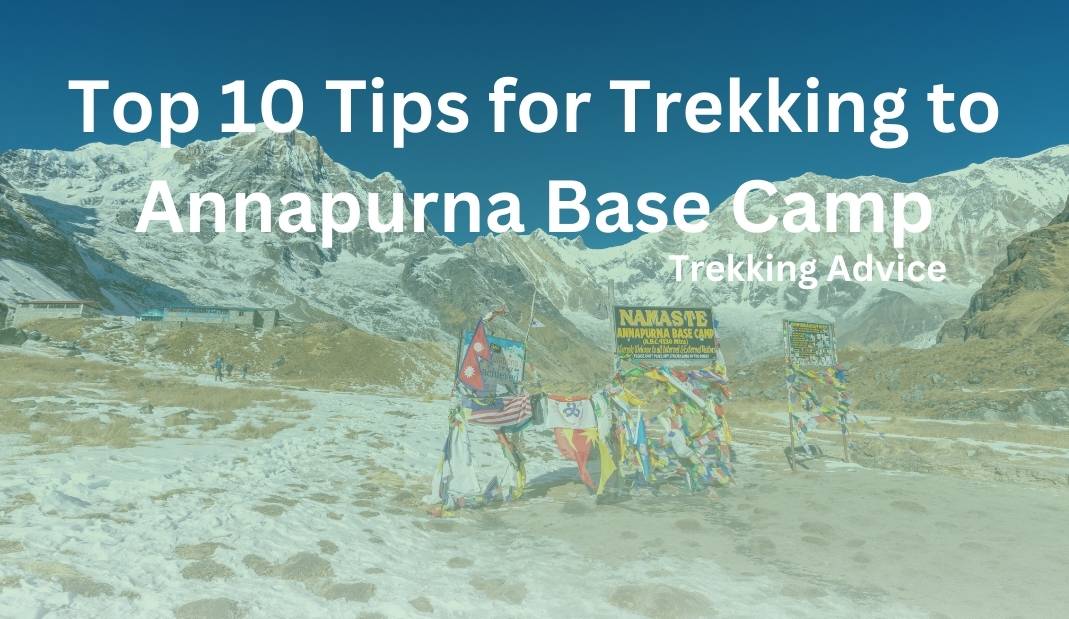
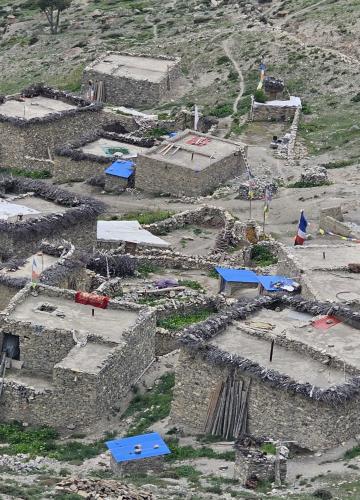
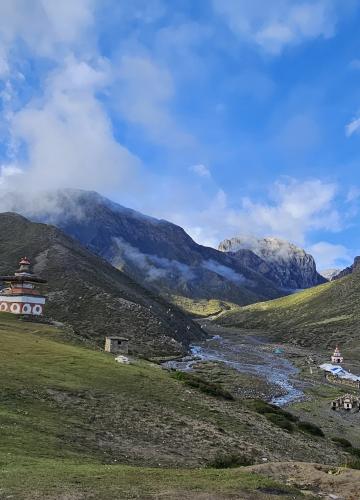
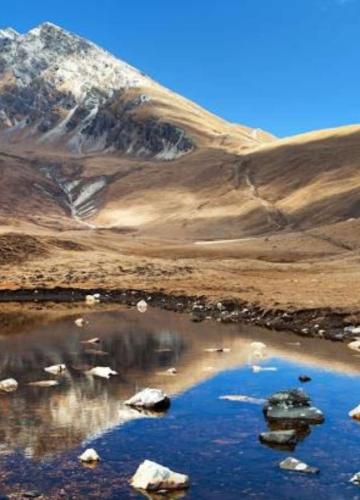
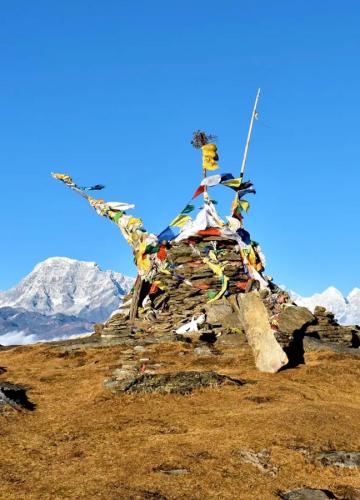
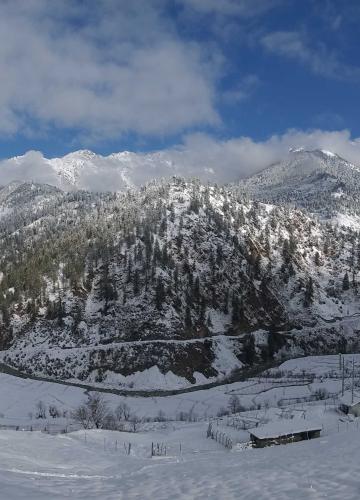

Leave Your Comment